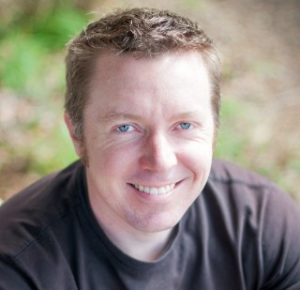 A fair amount of American national discourse often winds up in a lament that goes something like this: “Our country is more divided now than it ever has been.”
A fair amount of American national discourse often winds up in a lament that goes something like this: “Our country is more divided now than it ever has been.”
I suspect that sentiment is not true (America’s Civil War comes to mind, for example), but this moment does have some urgency to it. Spaces do tend to be grouped into red or blue, and within those groupings often exists further stratification by class.
“Division may in fact be painful, but the worst possible thing at this moment is to avoid it.”
Communities, we keep saying, are fractured by the spirit of division that rests on this land. The policy battles undergirding that division have real costs. Those costs are borne by the households and bodies and spirits of the poor especially. Given that in the United States, class has always been closely tied to race, though not synonymous with it, many – but not all – of those who live with the worst outcomes of our economic arrangements are people of color, and particularly black and indigenous people.
Division may in fact be painful, but the worst possible thing at this moment is to avoid it. These moments of division are the re-setting of a broken skeleton.
A common biology lesson teaches that when a bone breaks, there comes an important moment early on in its healing when a doctor will “set” the bone in order to assure that it heals correctly. A broken bone will usually grow back together, but there is no assurance that it will grow back together well. Setting the bone attempts to get it lined up so that the healed body will be as strong as it was prior to the injury.
Sometimes, though, a broken bone does not heal properly. When it grows in a misshapen or unhealthy way, a radical step is required. A doctor may re-break the bone, and then re-set the bone so that it grows straight, and strong, and in a way that benefits the rest of the body.
So it is today with the American church, and especially with the white churches – and the white families who make them up. At key moments in our history, white people and institutions have had the opportunity to deal with the fracture in our souls and our systems called “white supremacy.” White people have yet to be up to the task.
At the moment following the compound fracture called the Civil War, setting the bone right seemed possible during the period called Reconstruction. For the first time, black men were enfranchised with votes, and used them to elect representatives and to become elected officials.
But the poison of a movement called “Redemption,” which was anything but redemptive, began to grow in white communities. It stunted the healing of families, communities and churches. (This history and the present opportunity are presented well in William Barber’s book The Third Reconstruction: Moral Mondays, Fusion Politics, and the Rise of a New Justice Movement.)
“Redemption” gave birth to renewed violence, notably an armed coup d’état that unseated a multi-racial town government in Wilmington, North Carolina, then the state’s largest city. Dozens of African Americans were killed, including notable business and civic leaders, by angry white men who preferred the deformities of white supremacy to the opportunity to live in health and wellness. The violence was either ignored or encouraged around the state and the country, and even began to be undergirded with policy.
What followed the “Redemption” movement was lynching and Jim Crow; redlining and a discriminatory New Deal; poll taxes and “separate but equal.” In the stunted imaginations of white communities, civic leaders thought they were making their places great again.
“This opportunity for making repairs and seeking healing cannot be lost.”
When the fractured nature of white communities again burst through the skin during the Civil Rights Movement, white people once more rejected the opportunity for healing. Rather than confronting white supremacy, our ancestors and elders chose white flight and disinvestment.
They chose Urban Renewal and suburbanization. They chose the brutal austerity policies they called “compassionate conservatism,” which was neither compassionate nor conservative, except for the way it conserved wealth and power in the hands of a few. In that way, such policies worked against poor white families as well. We chose to self-inflict wounds, guaranteeing that they would later re-surface in the lives of children and grandchildren.
Division continues to rupture our common life. This time its focal point is a new Nebuchadnezzar, a jaundiced Pharaoh. But Donald Trump is not the cancer in our marrow, just a nasty symptom of a sickness unto death. Deposing him will not, in itself, bring healing. Only confronting white supremacy – and dismantling it from our institutions, our churches, our households and our souls – will.
This is painful work, but it is not to be avoided. This moment does not call for cheap unity, but for a clarified division.
The way ahead is hard. The fractures in this society run not only through our souls, but also through our family dinner tables and across the altars of our churches. However, this opportunity for making repairs and seeking healing cannot be lost.
Our churches can now re-imagine discipleship to make it explicitly anti-racist. We can develop strong class analysis, helping workers of every race to create more just arrangements. We can learn to use our power well, while at the same time divesting ourselves of it.
And we can pray with the Psalmist, who sees the breaking and healing of brittle, unhealthy bones as the very work of God. “Break the arm of the wicked and evildoers,” she prays. “Seek out their wickedness until you find none” (Psalm 10:15).
